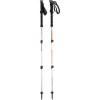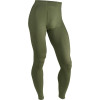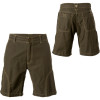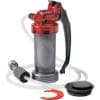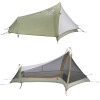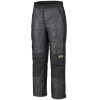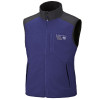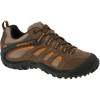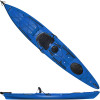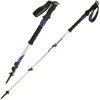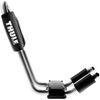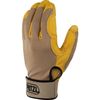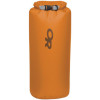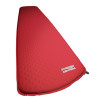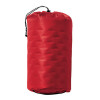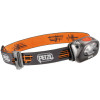View Traverse of the Bigelows in a larger map
If you’ve spent more than 10 minutes on this website, then you owe it to yourself to visit this place. The photos, words and other media which follow surely do no justice to the greatness of the Bigelow Range. But I’m getting ahead of myself. Lemme take this one from the top…
 |
| Pre- gear-explosion. |
Some of you may recall that the plan for this trip was formulated some weeks ago and only recently were we able to pull it off. It’s not the longest drive, but from Boston it’s far enough that it requires some planning and some time. An uninterrupted drive from Boston to Stratton, ME via the scenic route is projected to take 5.5 hours. Of course there is no such thing as an uninterrupted drive from Boston. Additionally, it was a perfect October weekend. Combined with my inability to be out of bed when I had planned to be out of it, we ended up arriving quite a bit later than we had planned: around 10 PM. The last leg of the trip was conducted after dark which was actually a lot cooler than we thought it would be: you really get the feel that you’re in the middle of no where once you cross out of New Hampshire and into Maine.
Eventually we passed through the towns of Stratton and Eustis which was our cue to begin looking for trail heads and campsites. The original plan was to crash at a private campground, make a fire, and chill for a few hours before hitting the sack. Since it was now 10 PM, cold, and windy, and since we were both starting to run out of steam, we abandoned our plans of luxurious camping and settled for more bare-bones accommodations. We knew there to be primitive campsites along the access road, Stratton Brook Pond Road (a mouthful, especially in the middle of the night when you mostly just want to be sleeping). After a few passes back and forth along US 27/16 we eventually found our stop: an ill-lit dirt road winding it’s way into the forest. Some sort of supplemental illumination would have been helpful in finding the place after dark. About a mile or so down this road we encountered a small parking area with maybe a half dozen cars and no people. A very small sign seemed to indicate that no vehicles were allowed past this point. We briefly contemplated hiking our camping gear the rest of the way to the primitive camp sites, but opted to stay put. It seemed harmless.
View Traverse of the Bigelows in a larger map
At only about 1000 feet and mostly in the cover of the trees, the wind was astonishingly strong! We actually put our tents between the woods and the car to break the wind, and even still we were afraid the howling winds would keep us up. By now it was into the mid 30s so we scrambled to get our shelters up. Upon completion of these activities we bundled up, cracked a few beers and had a lengthy look at the Milky Way, which neither of us had had the good fortune to see in quite some time. Around 11 PM we set our alarms for 5:30 AM, got into our tents and crashed.
When we crawled out of our sleeping bags the stars were still out, the wind was still howling and it was still about 35 degrees. Nothing like outright adverse conditions to get yourself fired up for the day! We tore down our camp in record time, tossed it all into the back of the car and set off down the road in search of the trail. Shortly, we found the AT, which comprises most of the hike. The few miles of the hike are essentially flat and we maintained a decent pace, all the while catching the sunrise. Shortly after passing Cranberry Stream Tentsite we start to gain some vertical. The foliage becomes decidedly coniferous. The forest itself is really interesting, full of glacial errata, and moose-friendly looking lowlands, wetlands and ponds.
 |
| The knife edge. |
It’s important to note that the Bigelows are essentially a knife edge. In order to get to the top you really have to make some pretty steep ascents. Fortunately, just as soon as you’re ready to take a break you encounter something cool to look at. Along the ascent we pass Cranberry Pond and Horns Pond, both of which are at elevation.
Me and Tripp getting lost in the woods seems to be a recurring trend at this point, but nevertheless I’ll take this opportunity to point out some confusing signage which led us about 2 miles out of our way: just prior to encountering Horns Pond, there’s a fork. Just be sure you go the right way – the inset map has more detail.
 |
| Flagstaff Lake from North Horn. |
Anyhow, we eventually realize the error of our ways, and get back on track. Right around now is when the fun begins! The summit of North and South Horns are within a few hundred vertical feet and the wind has only intensified since we’ve started. Once we reach North Horn (highly worth the brief detour) we have to shout to speak to each other. The wind is blasting out of the Northwest probably around 50 mph. It’s sunny and in the high 30s though the wind chill is significantly lower. Tripp finds a fortunate clearing in the trees just below the rocky summit where we decide to eat and drink. It’s out of the wind enough that we can lower our voices, but it’s still pretty cool, so we head off to the South Horn as soon as we’re done eating.
The South Horn might was well have been a beach resort by comparison: a small crowd is relaxing on the warm rocks, out of the wind and in the direct sunlight. Were it not for the fact that we had just stopped… well you get the idea. It was really nice.
Moving along, we descend into the saddle between the Horns and West Bigelow. For a while we’re out of the wind, but as we get closer to the middle of the saddle, and eventually start to head up again we’re buffeted by winds of increasing strength. Eventually we’re completely out of the lee of the Horns. The forest around us shows the signs of constant exposure to strong winds: seemingly every other tree is knocked over toward the south.
As we get closer and closer to West Bigelow we get glimpses of the ascent to come. It’s a craggy and rocky peak. It’s totally exposed. As we emerge from the treeline the wind kicks into high gear, meanwhile Tripp and I steady ourselves for the last few hundred feet. It’s not technically demanding, but it’s intimidating. Between the constant gusts of wind and the precipitous nature of the route it has a perilous feel to it. We summit, have a quick look around and decide to get the show on the road, something we notice just about everyone has done as well. It’s an awesome peak, but not really a place to relax. We descend down the a few hundred feet to the Fire Warden’s Trail at which point we leave the AT and make our way back toward Stratton Pond Brook Road.
View Traverse of the Bigelows in a larger map
By this stage of the game we’ve covered some serious ground (upwards of 10 miles), hit 3 peaks, and been up since 5:40 (it’s now past 6 PM). Having said that, I almost completely spaced out for the descent and don’t really remember any of it. We catch a few glimpses of Stratton Pond as well as the road where we left the car. Eventually we get to the bottom of the mountain and back to the road.
 |
| Out of focus but good colors! |
 |
| Sugarloaf and the sunset. |
The road is actually a lot longer than the map would seem to indicate – it runs a fair distance in to the woods and terminates at the pond. Around the area where the road terminates are plenty of parking spots and camp sites, many of which overlook the pond, the Bigelows and Sugarloaf. The legality of all of this is somewhat up in the air and I think I’ll just need to write some emails to get to the bottom of it all, but assuming it’s legit, these would have been excellent spots to camp, with fire pits, great views and easy access to the trails. Shortly down the road we found ourselves back the the car, where we packed up and headed home.
View Traverse of the Bigelows in a larger map
At the end of about fifteen miles, we wrapped things up and hit the road. It was a long challenging day, but how often can you say that caught both the sunrise and the sunset?
Gear List (click links for more product info):


